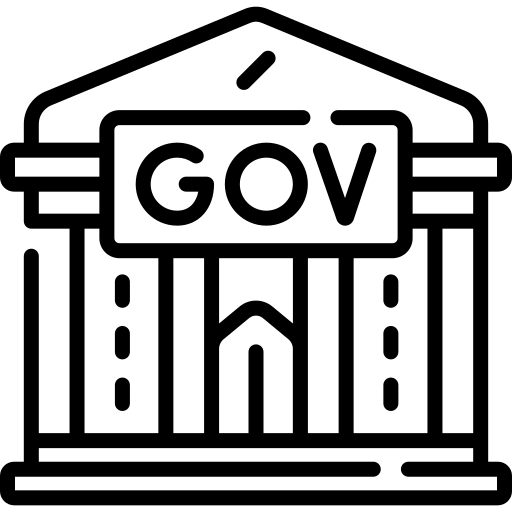10 year yield rises above 5% for the first time in 16 years
After a long 16 year drought, the 10-year U.S. Treasury yield has rose up above 5% for the first time since 2007, giving analysts and stock traders something to worry about. The last time yields were this high was during the financial crisis of 2008, making this development all the more noteworthy — especially given its implications on investor portfolios as well as overall market sentiment and trends across sectors and industries over the coming months. Against a backdrop of economic uncertainty due to pandemic lock downs around Europe and elsewhere, understanding how rising yields might affect your investments is key to staying ahead of possible pitfalls or opportunities while also positioning yourself in anticipation of further changes in interest rates moving forward. In this blog post we will take an in-depth look at what has driven treasury yields higher lately, why it matters for investors today—and present our thoughts on where things could be headed from here based on available data points so that you know everything you need to assess whether adjustments are needed when considering investing strategies going forward.
The Treasury 10 Year Yield rises above 5%, reaching its highest point since 2007
In a move that’s sure to grab the attention of investors worldwide, the Treasury 10 Year Yield has risen above 5%, marking its highest point since 2007. This news is bound to send shock waves through the financial markets and leave experts scrambling for explanations. It’s a significant milestone and represents a major shift in the economic landscape. While some may see this as cause for concern, others may view it as a sign of a strengthening economy. Whatever your stance may be, there’s no denying that this news will have far-reaching implications. Only time will tell how this development will impact our financial future.
The Impact of the Treasury 10 Year Yield Rise on Investors and Consumers
The recent rapid rise in the Treasury 10-Year Yield has left investors and consumers alike on edge. This sudden increase in interest rates, which is predicted to continue in the coming months, will have significant impacts on both parties. Investors may be tempted to pull back on their stock market investments due to the increasing returns on fixed-income securities. On the other hand, consumers looking to take out a mortgage or car loan will be forced to pay higher interest rates, potentially resulting in decreased buying power or a change in financial goals altogether. The Treasury 10-Year Yield rise is poised to shake up the investment and lending landscapes, leaving all parties involved unsure of what the future holds.
What the Increase in Interest Rates Means for Mortgage Rates
If you’re in the market for a new home, you may have been keeping an eye on mortgage rates. With the recent increase in interest rates, you may be wondering what impact this will have on mortgage rates. It’s important to understand that while there is a correlation between the two, they aren’t directly tied to each other. However, a rise in interest rates can affect mortgage rates in various ways. For example, lenders may increase their rates to make up for the higher cost of borrowing. Or, higher interest rates may cause fewer people to purchase homes, leading to lower demand and subsequently lower mortgage rates. Overall, it’s a complex relationship that can be difficult to predict, so it’s important to stay informed of economic indicators and work with a trusted lender to navigate the changing market.
How to Analyze the Impact of Rising Interest Rates on Your Investments
As an investor, keeping a close eye on interest rates is crucial to ensuring your portfolio remains in good standing. With rising interest rates, it’s essential to understand the potential impact on your investments. This includes everything from your bonds to your stocks. One way to analyze the impact is by examining how rising interest rates could affect the overall economy. Additionally, it’s important to consider the effects on your investment assets and liabilities, such as mortgages or car payments. Understanding these factors can help you make informed decisions on how to manage your portfolio during periods of rising interest rates. By staying informed and taking proactive measures, you can potentially minimize any negative impact and position yourself for long-term success in the market.

Steps You Can Take to Prepare for a Potential Increase in Bond Prices
With the economic landscape constantly changing, it’s crucial to be prepared for any potential shifts that could affect your financial well-being. One important factor to keep in mind is the possibility of an increase in bond prices. While there’s no way of knowing for sure what the future holds, there are steps you can take to safeguard your investments. Consider diversifying your portfolio, looking into alternative investment options, and keeping a close eye on market trends. By taking proactive measures, you can potentially mitigate the impact of any future increase in bond prices and ensure your financial stability.
Strategies for Minimizing Risk When Investing During a Period of Rising Interest Rates
Investing during a period of rising interest rates can be anxiety-provoking for even the most experienced investor. However, there are strategies that can be employed to help minimize risk and maximize returns. One approach is diversification; spreading your investments across different asset classes can help mitigate the effects of rising interest rates on any one particular investment. Another strategy is to focus on shorter-term investments that have a lower sensitivity to interest rate fluctuations. It’s also wise to keep an eye on the broader economic landscape and make adjustments accordingly and since Bretton Woods, gold can be a safe haven. By taking a thoughtful and strategic approach, investors can weather a period of rising interest rates with confidence.
It is important to stay informed and make educated decisions when considering investments during a period of rising interest rates. Now that the U.S. Treasury 10 Year Yield has surpassed its previous high from 2007, investors must take steps to ensure they have plans in place for rising interest rates. It is important to invest in assets that have potential returns even if bond prices fluctuate given increases in yield. Additionally, it might be wise to move old investments into short-term securities and monitor their portfolio’s performance closely so they can adjust according to any sudden changes within the markets. Due to the ever-changing environment of the market, investors must actively stay updated with current news and trends to adjust their investments accordingly. To stay informed about the latest market movements sign up for email alerts and receive push notifications as soon as possible! Taking such preparedness measures will hopefully relieve some of the speculation and lead investors towards more profitable investments during a period of rising interest rates.




